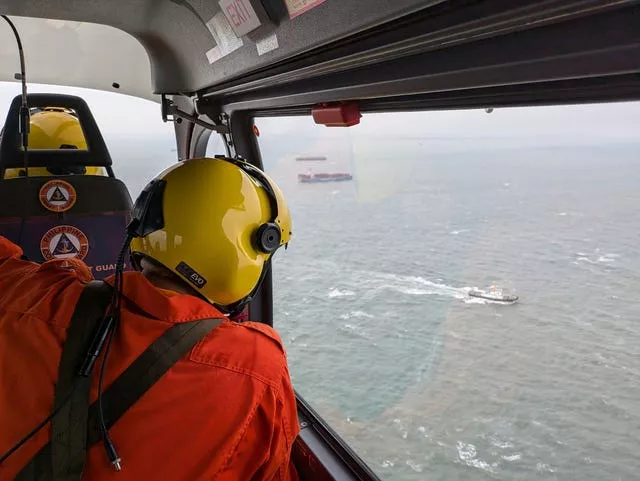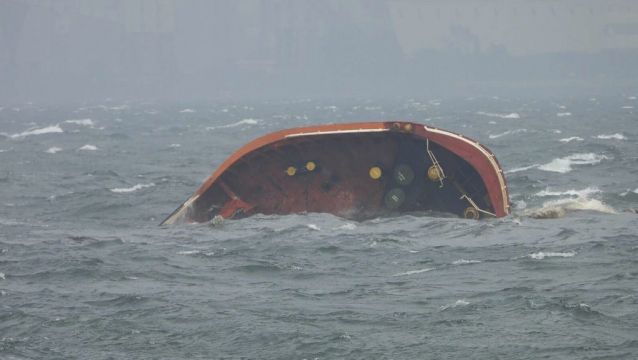A Philippine oil tanker has sunk in Manila Bay after encountering huge waves, leaving a crewman dead and 16 others rescued in a late-night operation by the coastguard.
The force is also assessing whether the vessel was leaking oil — in what could be a major spill — that could reach the bustling capital.
The tanker Terra Nova left Bataan province en route to the central province of Iloilo with about 1.4 million litres of industrial fuel oil stored in watertight tanks when it was buffeted by huge waves and took on water.
The crew struggled to steer the tanker back to port but it eventually sank shortly after midnight, coastguard spokesperson Rear Admiral Armando Balilo said, citing statements from surviving crew members.
The sinking followed days of monsoon rains, exacerbated by a passing offshore typhoon, that caused landslides and floodings across the archipelago, leaving at least 22 people dead and displacing more than half a million.
An aerial survey spotted an oil spill about 2.3 miles long near the rough seawaters where the tanker sank but that may have come from the fuel intended to power the tanker’s engine, not the much greater amount of fuel the Terra Nova was carrying as cargo, Mr Balilo said.
A coast guard ship, the BRP Melchora Aquino, was in the waters where the tanker sank, about four miles from Bataan province’s coast, to search for the last missing crewman, whose body was later retrieved from the water, and to carry out an initial assessment of the tanker’s fuel oil cargo, Mr Balilo told an online news conference.
He added that the coastguard is preparing to contain a possible major oil spill.
“There’s a big danger that Manila would be affected, its shorelines, if the fuel leaks because this happened within Manila Bay. It’s part of the contingency we’re preparing for,” he said. “The effect on the marine environment would not be good.”
Mr Balilo later said the oil tanker sank at a relatively shallow depth of 111ft, based on an initial assessment, and raised the possibility that its fuel oil cargo could be siphoned off by special ships in a delicate operation that could take about a week.

“Siphoning will not be very technical and can be done quickly to protect the vicinity waters of Bataan and Manila Bay against environmental, social, economic, financial and political impacts,” he said.He did not say if the tanker had been located on the seafloor and did not specify the status of its cargo.
He compared the magnitude of the possible oil spill to one caused by the sinking of another Philippine oil tanker, which was carrying much less fuel oil cargo, in February last year off Oriental Mindoro province north of Manila.
That spill took about three months to contain, caused massive damage to coral reefs and mangroves in a region known for its rich biodiversity, and affected tens of thousands of fishermen and beach resorts in at least six provinces.
Manila’s shoreline is a major tourism and business hub, where the main seaport, a historic public park, the US Embassy and upscale hotels and restaurants are located. Land reclamation efforts are also under way in the bay to create space for entertainment and tourism complexes with casinos.
The bay has been notorious for years for its pollution but famous for its picturesque sunsets.







